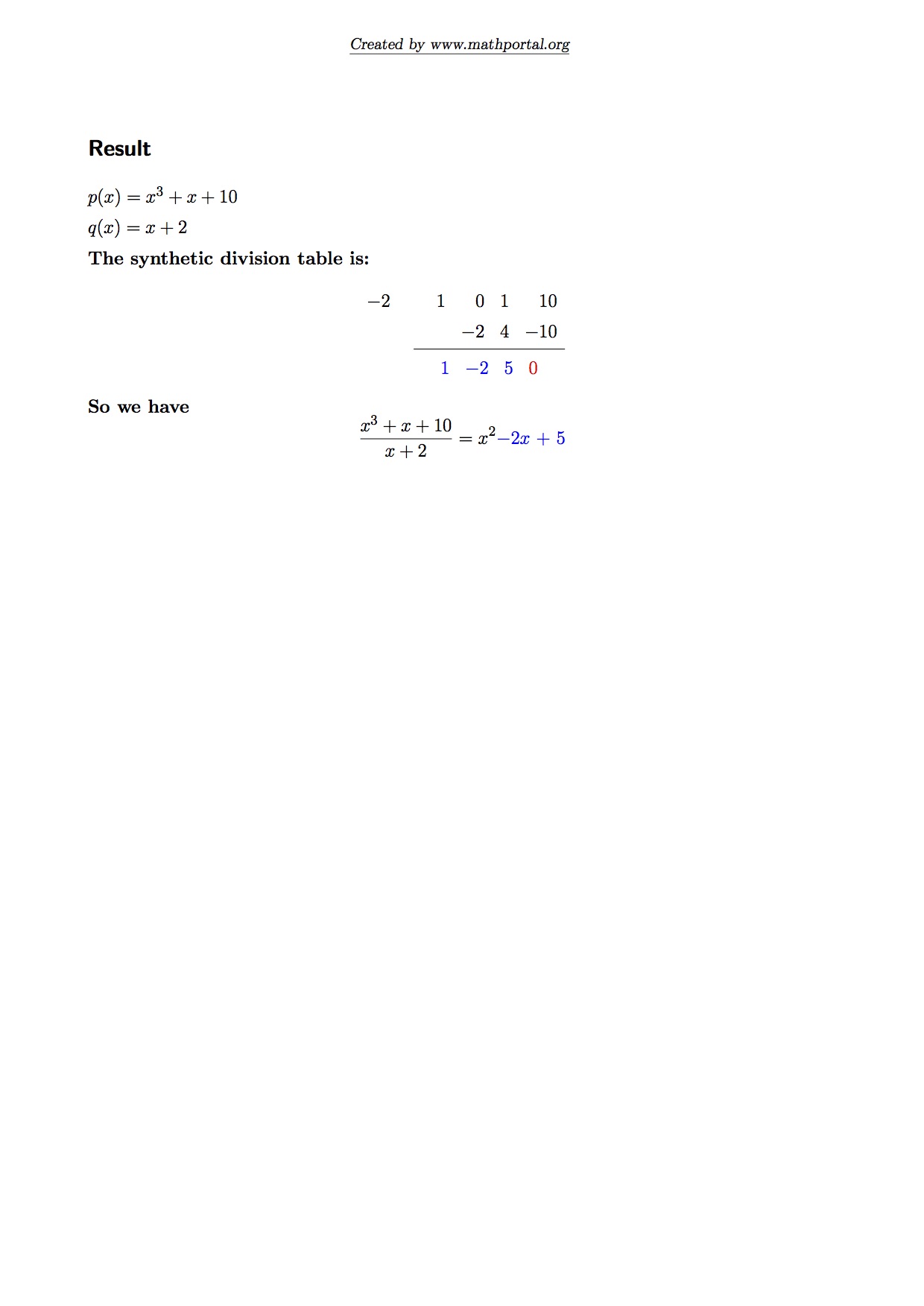How do you find the roots of #x^3+x+10=0#?
2 Answers
Explanation:
We can use the remainder and factor theorems to effectively factor this trinomial.
If
This gives us
We now use synthetic division to factor the trinomial.
We want to divide

The equation then becomes
Putting all of this together, the equation
Hopefully this helps!
Explanation:
The number of changes in signs of the coefficients is 0.
So, there are no positive roots.
Checking signs of the cubic, for #x = -1 and -2, we
find that -2 is a zero of the cubic.
So, it is of the form
(x+2)(x^2+ax+b).
Comparing like coefficients,

